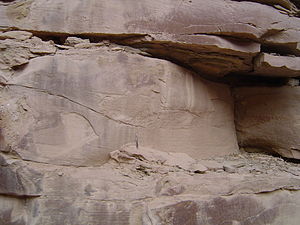
Lower shoreface refers to the portion of the seafloor, and the sedimentary depositional environment, that lies below the everyday wave base. [1]
Process[edit]
The wave base is the maximum depth at which a water wave's passage causes significant water motion.[1]
In this portion of the coastal marine environment, only the larger waves produced during storms have the power to agitate the seafloor.

Between storms, finer grained sediments accumulate on the seafloor, but during storms those sediments get suspended and moved around, resulting in a sedimentary structure form described as hummocky cross-stratification.[1]
Well, that’s interesting to know that Psilotum nudum are known as whisk ferns. Psilotum nudum is the commoner species of the two. While the P. flaccidum is a rare species and is found in the tropical islands. Both the species are usually epiphytic in habit and grow upon tree ferns. These species may also be terrestrial and grow in humus or in the crevices of the rocks.
View the detailed Guide of Psilotum nudum: Detailed Study Of Psilotum Nudum (Whisk Fern), Classification, Anatomy, Reproduction